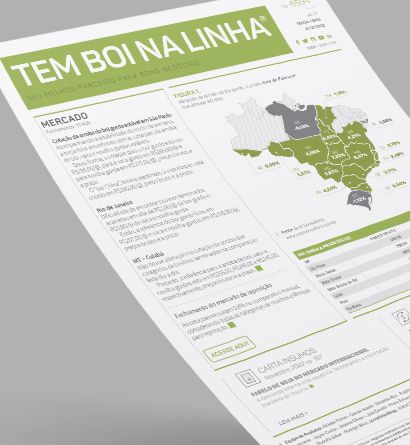Corn: The endo f the “Weather market”
por Felipe Fabbri
After days of great volatility, climate related News, Harvest and zoosanitary emergency alerts, the physical and future corn market have been more behaved in the last few days.
Notice, at image 1, that the ESALQ indicator ha sbeen behaving in a sideways manner, beacuse the price reference is mainly remained in the same range since 31/05, consolidating the price of R$53,77/bag.
There are manyt reasons for this behavior.
The brazilian corn market is huge and its demand also divides itself between exportation, domestic consume for the food industries, animal feedning, among others. However, one of the reasons may be the fact that the farmer is mindful of the production cost and well capitalized with the cash generated in the previous two harvests, in which prices reached previously unseen levels.
In Brazil, the little Harvest period was basically finished at its biggest producer, Mato Grosso. According with the Ag Rural data, the consolidated field works, until Thursday (03/08) ha dreached 64% of the sown area in brazilian south-center.
United States
In the USA, the main News is the endo f the so called “Weather market”, which covers the rains or drought prevision publicity, in the next days at the main points of the north-american production belt. This publicity tends to have less relevance in future prices expectations of the grains.
The last data released by USDA showed that Around 57% of north-american Fields were rated between “good and excelent”, really close to the 58% verified last year.
This Friday (11/08), the USDA may bring new productive estimatives, with corn and soybean production in the USA. With the Weather market having less weight from now on, the data must be well observed by the market.
Argentina
In Argentina, the Harvest is relatively advanced. According to the Buenos Aires’s Cereal Market information, Around 72,6% of the cultivated area ha dbeen harvested until last week (04/08).
Another main aspect, that disassociates from the field work, but reinforces a caliming fator, is the relief related to bird flu cases in the neighbouring country.
The National Health and Quality Agrifood Service (Senasa), ended the procedures at the last argentinian bird flu case and declared the country disease free. As temperatures rise again, it is possible that the cases in the Other surrounding countries also dissipate.
Últimas notícias
Entrevista
Newsletter diária
Receba nossos relatórios diários e gratuitos






